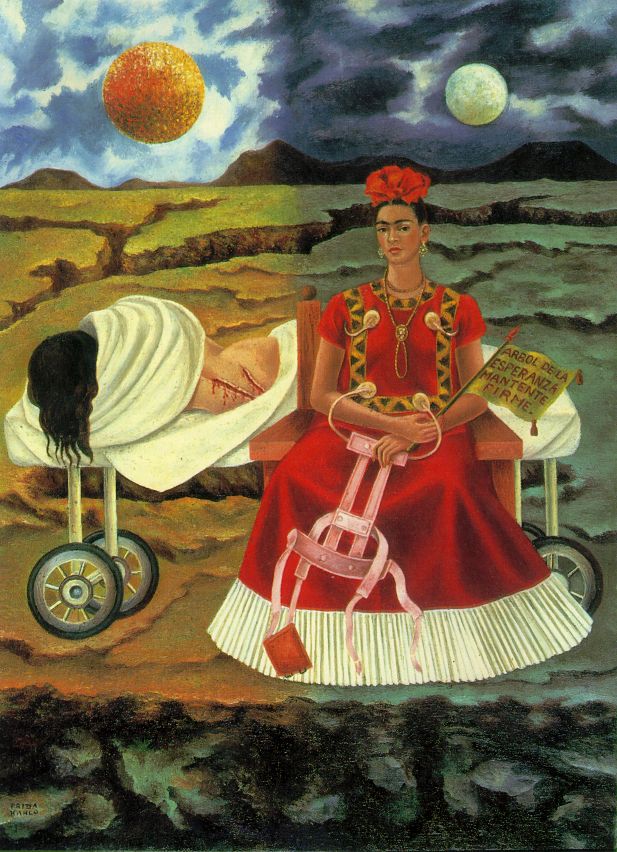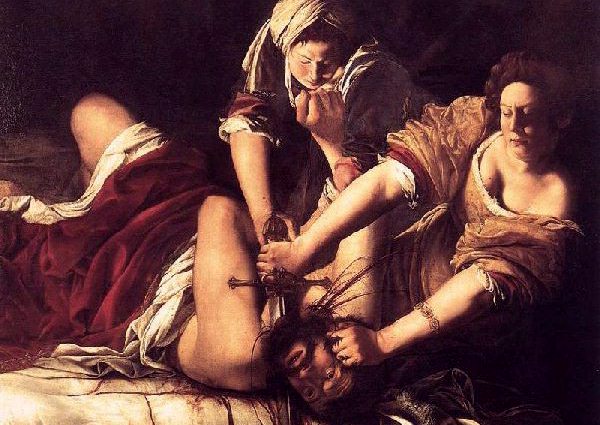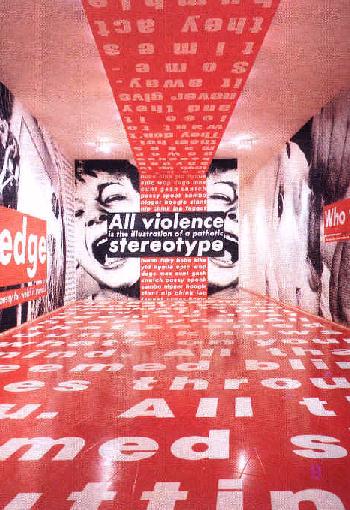 |
||||||
|
Feminism & Feminist Art
Especially since the late 1960s, when the feminist art movement can be said to have emerged, women have been particularly interested in what makes them different from males — what makes women artists and their art different from male artists and their art. This has been most prominent in the United States, Britain, and Germany, although there are numerous precursors to the movement, and it has spread to many other cultures since the 1970s. Feminists point out that throughout most of recorded history males have imposed patriarchal (father-centered) social systems (in which they have dominated females). Although it is not the goal of this article to recount the development of feminist theory in full, the history of feminist art cannot be understood apart from it. Feminist theory must take into account the circumstances of most women's lives as mothers, household workers, and caregivers, in addition to the pervasive misconception that women are genetically inferior to men. Feminist art notes that significant in the dominant (meaning especially Western) culture's patriarchal heritage is the preponderance of art made by males, and for male audiences, sometimes transgressing against females. Men have maintained a studio system which has excluded women from training as artists, a gallery system that has kept them from exhibiting and selling their work, as well as from being collected by museums — albeit somewhat less in recent years than before. Here is a notice posted by the Guerrilla Girls (founded in 1985, a New York based group of otherwise unnamed women "artists, writers, performers and film makers who fight discrimination") in a list they published in 1989:
Feminist art history must be considered as part of this discussion. Its proponents have demanded that women's arts from all cultures, of all periods, be included in studies and exhibitions of art. In 1971 Linda Nochlin (American, contemporary art critic) wrote a landmark article, "Why Have There Been No GREAT Women Artists?" giving tremendous momentum to feminist scholarship concerning women in the arts. Numerous histories of women artists were published in the 1970s, and several others have appeared in the years since then. Before the late 1960s most women artists, struggling to participate in the male-dominated art world, had overwhelming disincentives to put feminist meanings into their work, and sought to de-gender their art. Often, on the basis of appearance alone, their work could not be identified as woman-made. Several countercultural movements arose simultaneously with feminism in the 1960s. At this time the United States experienced social upheaval coming with the Civil Rights Movement, the Vietnam War, economic prosperity, the arrival of oral contraceptives, reforms in the Catholic Church, nostalgia for the presidency of John F. Kennedy, and experimentation with psychotropic drugs. Many other countries experienced social unrest of various kinds during this period. Some gender issues have been of interest to both male and female artists. Although feminist art has arisen more from the concerns of artists of one gender, and some of those concerns are sexual in nature, more often than not feminist issues have been about women's power in arenas of which sexuality (reproductive acts and roles) is an important part.
1. How is a woman's gaze different from a man's? How does that difference influence the ways in which the two genders view the world? And how they view art? 2. What constitutes obscenity and pornography? Where do they come from? What are their results? Are they always transgessive? What place do they have in art? Although feminist artists have shown great interest in the depiction of nude figures (both male and female), very few feminist artists have shown interest in creating erotic work. Learn more by reading Feminist Art Practices & Political Art. Examples of Feminist Artists:
Other Famous Women Artists:
Articles about Feminist Art:
Feminist Art Practices & Political Art
Women Artists of the 20th & 21st Centuries
Why Have There Been No GREAT Women Artists?
In theory the Feminist Art Movement began with the idea that women’s experiences must be expressed through art, where they had previously been ignored or trivialized. But in truth it was likely more of reaction to the way women were treated, and therefore feminist art is really a form of propaganda.
Early members of the Feminist Art Movement in the USA likely envisioned a revolution. They called for a new framework in which the universal would include women’s experiences, in addition to men’s. Like others in the Women’s Liberation Movement, feminist artists discovered the impossibility of completely changing their society.
Historical Context
Linda Nochlin’s essay “Why Are There No Great Female Artists?” was published in 1971. Of course, there had been some awareness of female artists before the Feminist Art Movement. Women had created art for centuries. Mid-20th century retrospectives included a 1957 Life magazine photo essay called “Women Artists in Ascendancy” and the 1965 exhibit "Women Artists of America, 1707-1964,” curated by William H. Gerdts, at the Newark Museum.
Becoming a Movement in the 1970s
It is difficult to pinpoint when awareness and questions coalesced into the Feminist Art Movement. In 1969, the New York group Women Artists in Revolution (WAR) split off from the Art Workers’ Coalition (AWC) because the AWC was male-dominated and would not protest on behalf of women artists. In 1971, female artists picketed the Corcoran Biennial in Washington D.C. for excluding women artists, and New York Women in the Arts organized a protest against gallery owners for not exhibiting women’s art.
Also in 1971, Judy Chicago, one of the most prominent early activists in the Movement, established the Feminist Art program at Cal State Fresno. In 1972, Judy Chicago created Womanhouse with Miriam Schapiro at the California Institute of the Arts (CalArts), which also had a Feminist Art program.
Womanhouse was a collaborative art installation and exploration. It consisted of students working together on exhibits, performance art and consciousness-raising in a condemned house that they refurbished. It drew crowds and national publicity for the Feminist Art Movement.
Feminism and Postmodernism
But what is Feminist Art? Art historians and theorists debate whether Feminist Art was a stage in art history, a movement, or a wholesale shift in ways of doing things. Some have compared it to Surrealism, describing Feminist Art not as a style of art that can be seen but rather a way of making art.
Feminist Art asks many questions that are also part of Postmodernism. Feminist Art declared that meaning and experience were as valuable as form; Postmodernism rejected the rigid form and style of Modern Art. Feminist Art also questioned whether the historical Western canon, largely male, truly represented “universality.”
Feminist artists played with the ideas of gender, identity, and form. They used performance art, video, and other artistic expression that would come to be significant in Postmodernism but had not traditionally been seen as high art. Rather than “Individual vs. Society,” Feminist Art idealized connectivity and saw the artist as part of society, not working separately.
Feminist Art and Diversity
By asking whether male experience was universal, Feminist Art paved the way for questioning exclusively white and exclusively heterosexual experience as well. Feminist Art also sought to rediscover artists. Frida Kahlo had been active in Modern Art but left out of the defining history of Modernism. Despite being an artist herself, Lee Krasner, wife of Jackson Pollock, was seen as Pollock’s support until she was rediscovered.
Many art historians have described pre-feminist women artists as links between various male-dominated art movements. This reinforces the feminist argument that women somehow do not fit into the categories of art that were established for male artists and their work.
Backlash
Some women who were artists rejected feminist readings of their work. They may have wanted to be viewed only on the same terms as artists that had preceded them. They may have thought that Feminist Art criticism would be another way of marginalizing women artists.
Some critics attacked Feminist Art for "essentialism." They thought each individual woman’s experience was claimed to be universal, even if the artist had not asserted this. The critique mirrors other Women’s Liberation strugggles. Divisions arose when anti-feminists convinced women that feminists were, for example, “man hating” or “lesbian,” thus causing women to reject all of feminism because they thought it was trying to foist one person’s experience onto others.
Another prominent question was whether using women’s biology in art was a way of restricting women to a biological identity--which feminists were supposed to have fought against--or a way of releasing women from the negative male definitions of their biology.
For regular updates on what is going on in the Feminist Art Movement we recommend the blog N.Paradoxa.
|
|
|||||
|
|
||||||
 The Advantages of Being a Woman Artist:
The Advantages of Being a Woman Artist:
 Feminist art sometimes poses or confronts such questions as:
Feminist art sometimes poses or confronts such questions as:
